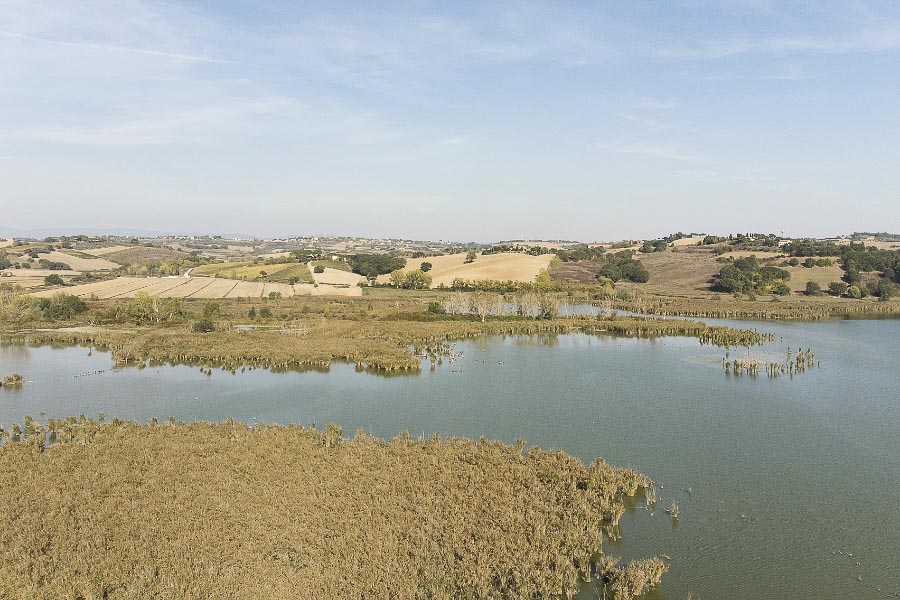The Lake Environments

The Reedbed
Reedbeds populated with the Common Reed (Phragmites australis) cover more than 40% of the surface area of the Nature Reserve, both in the form of belts, between the open waters and the banks, and in wide expanses within the lake basin.
A variety of hygrophilous plants develop on the edges of the reedbed, but in the internal parts the dominance of the Common Reed is so intense that only a few creeping plants, such as Hedge Bindweed (Calystegia sepium) and Bittersweet (Solanum dulcamara), can compete, as long as there is a period of dry weather in summer.
Although the environment may seem to be very homogeneous, in actual fact the ecological significance of this plant formation varies according to the extension, the period of permanence of the water and characteristics such as the density, stratification and height of the stalks. These factors condition the presence of the birds linked to this habitat, which are among the most endangered species of avifauna. Consequently, there is a need to implement correct management plans, also to counteract the decline of the reedbeds, which is taking place both at local level and on a continental scale.
The reeds of permanently flooded areas (most of those present in the reserve) are particularly affected, showing phenomena of “tufting”, fragmentation and reduction of development (symptoms related to a complex pathological condition called “die back”).
The Bittern is one of the bird species that symbolise the reedbed. Their colouring and “reed-like” posture, their very long prehensile toes and the powerful song of the male are admirable adaptations to this particular type of vegetation. A species of particular interest to conservationists, the Bittern used to nest in the nature reserves of Chiusi and Montepulciano; in recent years, the species has stopped nesting in Tuscany, but marshy areas with extensive reed beds are home to a large wintering population.
